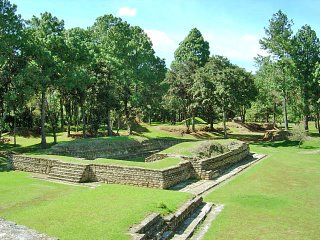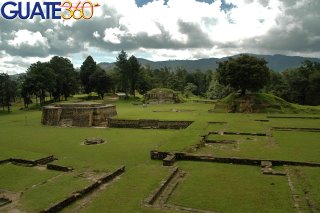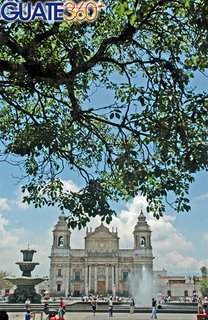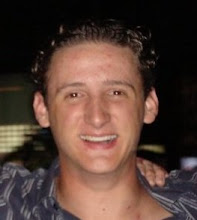GUATEMALA
This blog it’s about Guatemala, you can find any thing here, photos, videos, general information, tourist places of this incredible country and more....!
Wednesday, November 08, 2006
Tuesday, November 07, 2006
ABOUT GUATEMALA

Guatemala is a country in Central America, in the south part of North America, bordering Mexico to the northwest, the Pacific Ocean to the southwest, Belize and the Caribbean Sea to the northeast, and Honduras and El Salvador to the southeast.
Guatemala is divided into 22 departments (departamentos) and sub-divided into about 332 municipalities (municipios). The departments include:
- Alta Verapaz
- Baja Verapaz
- Chimaltenango
- Chiquimula
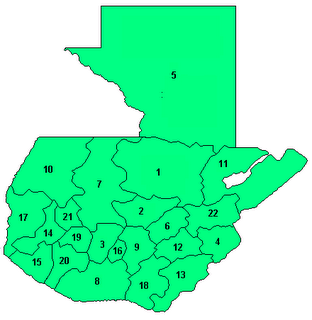
- Petén
- El Progreso
- El Quiché
- Escuintla
- Guatemala
- Huehuetenango
- Izabal
- Jalapa
- Jutiapa
- Quetzaltenango
- Retalhuleu
- Sacatepéquez
- San Marcos
- Santa Rosa
- Sololá
- Suchitepéquez
- Totonicapán
- Zacapa
See on "GUATEMALAN PHOTOS" for some pictures of each departament.
Politics of Guatemala takes place in a framework of a presidential representative democratic republic, whereby the President of Guatemala is both head of state and head of government, and of a pluriform multi-party system. Executive power is exercised by the government. Legislative power is vested in both the government and the Congress of the Republic. The Judiciary is independent of the executive and the legislature.
GENERAL INFORMATION
National name: República de Guatemala
Land area: 41,865 sq mi (108,430 sq km);
Total area: 42,042 sq mi (108,890 sq km)
Population (2006 est.): 12,293,545 (growth rate: 2.3%); birth rate: 29.9/1000; infant mortality rate: 30.9/1000; life expectancy: 69.4; density per sq mi: 294
Capital and largest city (2003 est.): Guatemala City, 2,655,900 (metro. area), 1,128,800 (city proper)
Other large cities: Mixco, 287,600; Villa Nueva, 138,900
Monetary unit: Quetzal
Languages: Spanish 60%, Amerindian languages 40% (23 officially recognized Amerindian languages, including Quiche, Cakchiquel, Kekchi, Mam, Garifuna, and Xinca)
Ethnicity/race: Mestizo (Ladino)—mixed Amerindian-Spanish ancestry—and European 59.4%, K'iche 9.1%, Kaqchikel 8.4%, Mam 7.9%, Q'eqchi 6.3%, other Mayan 8.6%, indigenous non-Mayan 0.2%, other 0.1% (2001)
Religions: Roman Catholic, Protestant, indigenous Mayan beliefs
Literacy rate: 71% (2003 est.)
Economic summary: GDP/PPP (2005 est.): $62.97 billion; per capita $5,200. Real growth rate: 3.1%. Inflation: 9.1%. Unemployment: 7.5% (2003 est.). Arable land: 13%. Agriculture: sugarcane, corn, bananas, coffee, beans, cardamom; cattle, sheep, pigs, chickens. Labor force: 3.76 million; agriculture 50%, industry 15%, services 35% (1999 est.). Industries: sugar, textiles and clothing, furniture, chemicals, petroleum, metals, rubber, tourism. Natural resources: petroleum, nickel, rare woods, fish, chicle, hydropower. Exports: $3.94 billion f.o.b. (2005 est.): coffee, sugar, petroleum, apparel, bananas, fruits and vegetables, cardamom. Imports: $7.744 billion f.o.b. (2005 est.): fuels, machinery and transport equipment, construction materials, grain, fertilizers, electricity. Major trading partners: U.S., El Salvador, Honduras, Mexico, South Korea, China, Japan (2004).
Communications: Telephones: main lines in use: 846,000 (2002); mobile cellular: 1,577,100 (2002). Radio broadcast stations: AM 130, FM 487, shortwave 15 (2000). Television broadcast stations: 26 (plus 27 repeaters) (1997). Internet hosts: 20,360 (2003). Internet users: 400,000 (2002).
Transportation: Railways: total: 886 km (2004). Highways: total: 14,118 km; paved: 4,871 km (including 74 km of expressways); unpaved: 9,247 km (1999). Waterways: 990 km; note: 260 km navigable year round; additional 730 km navigable during high-water season (2004). Ports and harbors: Puerto Quetzal, Santo Tomas de Castilla. Airports: 452 (2004 est.).
International disputes: Guatemalan squatters continue to settle in the rain forests of Belize's border region; OAS is attempting to revive the 2002 failed Differendum that created a small adjustment to land boundary, a Guatemalan maritime corridor in Caribbean, a joint ecological park for the disputed Sapodilla Cays, and a substantial US-UK financial package; Guatemalans enter Mexico illegally seeking work or transit to the US.
GUATEMALAN CULTURE

- La Marimba -----> National Instrument.
Listen to this marimba song called (El Ferrocarril De Los Altos)

- La Monja Blanca -----> National Flower.
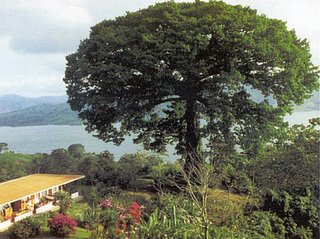
- La Ceiba -----> National Tree.

- El Quetzal -----> National Bird.

- El Escudo De Armas -----> National shield of Weapons.

- La Bandera Nacional -----> National Flag.

- Heroe Nacional (Tecun Human)-----> National Hero.
Music: Rafael Álvarez Ovalle
letter: José Joaquín Palma
¡Guatemala feliz...! que tus aras
no profane jamás el verdugo;
ni haya esclavos que laman el yugo
ni tiranos que escupan tu faz.
Si mañana tu suelo sagrado
lo amenaza invasión extranjera,
libre al viento tu hermosa bandera
a vencer o a morir llamará.
C O R O
Libre al viento tu hermosa bandera
a vencer o a morir llamará;
que tu pueblo con ánima fiera
antes muerto que esclavo será.
De tus viejas y duras cadenas
tu forjaste con mano iracunda
el arado que el suelo fecunda
y la espada que salva el honor.
Nuestros padres lucharon un día
encendidos en patrio ardimiento
y lograron sin choque sangriento
colocarte en un trono de amor.
C O R O
Y lograron sin choque sangriento
colocarte en un trono de amor,
que dé patria en enérgico acento,
dieron vida al ideal redentor.
Es tu enseña pedazo de cielo
en que prende una nube su albura,
y ¡ay de aquel que, con ciega locura,
sus colores pretenda manchar!
Pues sus hijos valientes y altivos,
que veneran la Paz cual presea,
nunca esquivan la ruda pelea
si defienden su tierra y su hogar.
C O R O
Nunca esquivan la ruda pelea
si defienden su tierra y su hogar,
que es tan sólo el honor su alma idea
y el altar de la patria su altar.
Recostada en el ande soberbio
de dos mares al ruido sonoro,
bajo el ala de grana y de oro
te adormeces del bello quetzal.
Ave indiana que vive en tu escudo
paladión que protege tu suelo;
¡ojalá que remonte su vuelo,
más que el cóndor y el águila real!
C O R O
¡Ojalá que remonte se vuelo,
más que el cóndor y el águila real,
y en sus alas levante hasta el cielo,
Guatemala, tu nombre inmortal!
Listen to the Guatemalan National Anthem with some great views!

This is an example of a typical candies store on a national festival.

This is an example of a seller on the national market.
Famous Artists

- Ricardo Arjona.
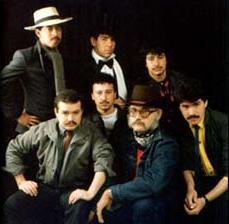
- Alux Nahual.
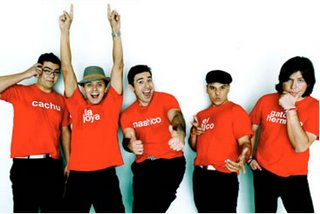
- Malacates Trebol Shop.

- Viento en Contra.

- Bohemia Suburbana.

- Los Punannis.
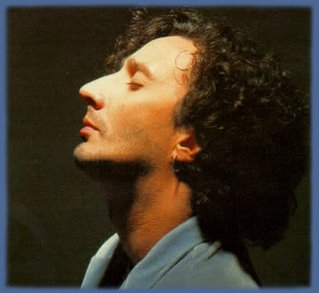
- Fito Páez.
- El Tambor Le La Tribu.
- El Clubo.
- Ricardo Andrade.
- Golpes Bajos.
- La Racha.
GUATEMALAN HISTORY
Once the site of the impressive ancient Mayan civilization, Guatemala was conquered by Spanish conquistador Pedro de Alvarado in 1524 and became a republic in 1839 after the United Provinces of Central America collapsed. From 1898 to 1920, dictator Manuel Estrada Cabrera ran the country, and from 1931 to 1944, Gen. Jorge Ubico Castaneda served as strongman.
After Ubico's overthrow in 1944 by the “October Revolutionaries,” a group of left-leaning students and professionals, liberal-democratic coalitions led by Juan José Arévalo (1945–1951) and Jacobo Arbenz Guzmán (1951–1954) instituted social and political reforms that strengthened the peasantry and urban workers at the expense of the military and big landowners, like the U.S.-owned United Fruit Company. With covert U.S. backing, Col. Carlos Castillo Armas led a coup in 1954, and Arbenz took refuge in Mexico. A series of repressive regimes followed, and by 1960 the country was plunged into a civil war between military governments, right-wing vigilante groups, and leftist rebels that would last 36 years, the longest civil war in Latin American history. Death squads murdered an estimated 50,000 leftists and political opponents during the 1970s. In 1977, the U.S. cut off military aid to the country because of its egregious human rights abuses. The indigenous Mayan Indians were singled out for special brutality by the right-wing death squads. By the end of the war, 200,000 citizens were dead.
A succession of military juntas dominated during the civil war, until a new constitution was passed and civilian Marco Vinicio Cerezo Arévalo was elected and took office in 1986. He was followed by Jorge Serrano Elías in 1991. In 1993, Serrano moved to dissolve Congress and the supreme court and suspend constitutional rights, but the military deposed Serrano and allowed the inauguration of Ramiro de Leon Carpio, the former attorney general for human rights. A peace agreement was finally signed in Dec. 1996 by President Álvaro Arzú Irigoyen.
In 1999, a Guatemalan truth commission blamed the army for 93% of the atrocities and the rebels (the Guatemalan National Revolutionary Unit) for 3%. The former guerrillas apologized for their crimes, and President Clinton apologized for U.S. support of the right-wing military governments. The army has not acknowledged its guilt. Alfonso Portillo Cabrera, closely associated with the former dictatorship of Efrain Rios Montt (1982–1983), became president in Jan. 2000. In Aug. 2000, Portillo apologized for the former government's human rights abuses and pledged to prosecute those responsible and compensate victims.
To stimulate the economy, Guatemala, along with El Salvador and Honduras, signed a free trade agreement with Mexico in June 2000. In Aug. 2001, plans for tax increases prompted widespread, and often violent, protests.
In July 2003, the country's highest court ruled that former coup leader and military dictator Rios Montt, responsible for the massacre of tens of thousands of civilians during the civil war, was eligible to run for president in November. The ruling conflicted with the constitution, which bans anyone who seized power in a coup from running for the presidency. But in November, Rios Montt was soundly defeated by two candidates, conservative Oscar Berger and center-leftist Alvaro Colom. In the runoff election in December, Berger was elected president.
In 2004, Guatemala experienced an alarmingly violent crime wave. More than 2,000 murders took place, which were blamed on crime gangs and bands of teenagers.
In 2005, the government ratified a free-trade agreement (CAFTA) with the U.S.
GUATEMALAN PHOTOS


Departament of Bajaverapaz (2):

City of San Jerónimo

The river of Chixoy

All the Valley of Bajaverapaz
Departament of Chimaltenango (3):

Chimaltenango Valley

Plateau of Chimaltenango

Rodeo

One of the best restaurants on Chimaltenango, it's called "Katok"
Iximché ruins:

Esquipulas' Church

Nature Of Chiquimula

Crafts, made by Chiquimulan people called "Chortí"

The Black Christ of Chiquimula

Festival

Departament of Petén (5):
Flores Island
Mayan Cities
TIKAL:
Acrópolis with Temple # 1 (Gran Jaguar)
Temples
Temples # 1 (Gran Jaguar), # 2 and # 4 from the top
Temple # 1 (Gran Jaguar)
Temple # 2
Temple # 3
Temple # 4
YAXÁ:

Guastatoya's Soccer Stadium
Departament of El Quiché (7):
Lamoa's Lagoon
Zacualpa's Church
Chichicastenango City:
Gucumatz's Arc
Chichicastenango's Marquet
Departament of Escuintla (8):
Departament of Guatemala (9):
This is the National Palace
This is the Metrapolitan Cathedral

This is the beautiful lake of Amatitlán, is locataed next to Guatemala City
Departament of Huehuetenango (10):
Departament of Izabal (11):
Departament of Jalapa (12):
Departament of Jutiapa (13):
Departament of Quetzaltenango (14):
Departament of Retalhuleu (15):
Departament of Sacatepéquez (16):
Departament of San Marcos (17):
Departament of Santa Rosa (18):
Departament of Sololá (19):
Departament of Suchitepéquez (20):
Departament of Totonicapán (21):
Departament of Zacapa (22):










